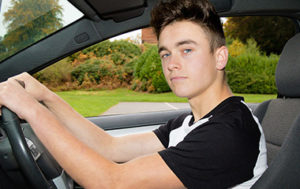Home » Driving Laws » UK Speed Limits: Here’s What You Need To Know
UK Speed limits: Here’s what you need to know
UK speed limits help keep you and other road users safe on the roads. But speed limits can often be confusing, and it may be unclear what speed you should be travelling at.
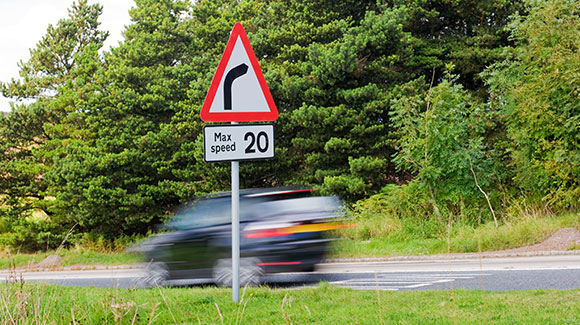
Do not treat speed limits as targets. You can drive up to the speed limit if the conditions allow you to do so safely, but you must not exceed the speed limit.
Speed limits vary depending on the type of road you’re driving on and the vehicle that you’re using. However, a speed limit of 30 miles per hour usually applies on roads with regular street lighting unless there are signs that state otherwise.
Where there is no street lighting, the speed limit for cars and motorcycles is usually 60 miles per hour on single carriageways and 70 miles per hour on dual carriageways. This is the national speed limit and is defined by a white circular sign with a black diagonal stripe through it.
The speed limits apply at all times, regardless of what time of the day you drive at. Many motorists tend to drive faster at night because the roads are often quieter. But driving at night can often be more dangerous as it is harder to judge speed and distance or spot hazards in the dark.
National speed limits for different roads
| Built-up areas mph (km/h) | Single carriageways mph (km/h) | Dual carriageways mph (km/h) | Motorways mph (km/h) | |
|---|---|---|---|---|
| Cars, motorcycles, car-derived vans, and dual-purpose vehicles | 30 (48) | 60 (96) | 70 (112) | 70 (112) |
| Cars, motorcycles, car-derived vans, and dual-purpose vehicles when towing caravans or trailers | 30 (48) | 50 (80) | 60 (96) | 60 (96) |
| Motorhomes or motor caravans (not more than 3.05 tonnes maximum unladen weight) | 30 (48) | 60 (96) | 70 (112) | 70 (112) |
| Motorhomes or motor caravans (more than 3.05 tonnes maximum unladen weight) | 30 (48) | 50 (80) | 60 (96) | 70 (112) |
| Buses, coaches, and minibuses (not more than 12 metres overall length) | 30 (48) | 50 (80) | 60 (96) | 70 (112) |
| Buses, coaches, and minibuses (more than 12 metres overall length) | 30 (48) | 50 (80) | 60 (96) | 60 (96) |
| Goods vehicles (not more than 7.5 tonnes maximum laden weight) | 30 (48) | 50 (80) | 60 (96) | 70 (112) 60 (96) if articulated or towing a trailer |
| Goods vehicles (more than 7.5 tonnes maximum laden weight) in England and Wales | 30 (48) | 50 (80) | 60 (96) | 60 (96) |
| Goods vehicles (more than 7.5 tonnes maximum laden weight) in Scotland | 30 (48) | 40 (64) | 50 (80) | 60 (96) |
What are the penalties for speeding?
Driving faster will rarely get you to your destination quicker. Most of the time, you’ll just get caught up with the traffic ahead. Speeding increases the likelihood and severity of accidents when they occur, so it’s not worth taking the risk.
If you’re caught speeding, you could receive:
- A verbal warning if a police officer stops you on the road.
- A Fixed Penalty Notice (FPN), which is typically a £100 fine and three penalty points on your driving licence.
- A court summons.
- The option to attend a speed awareness course.
Single and dual carriageway
The speed limits on single and dual carriageways are not defined by the number of lanes, but by the presence of a central reservation.
A single-carriageway is a road where there is no central reservation to separate the flow of traffic in both directions. A single carriageway can have one, two, or multiple lanes going in the same direction.
A dual carriageway is a road that is separated by a central reservation, regardless of the number of lanes in each direction.
Repeaters
Repeaters are smaller round speed limit signs that are usually displayed at regular intervals on either side of the road and are typically attached to lamp posts.
Where there is street lighting on a road where the speed limit is not 30 miles per hour, repeater signs are used to show the speed limit.
Repeater signs are not usually displayed on roads with regular street lighting not more than 200 yards apart.
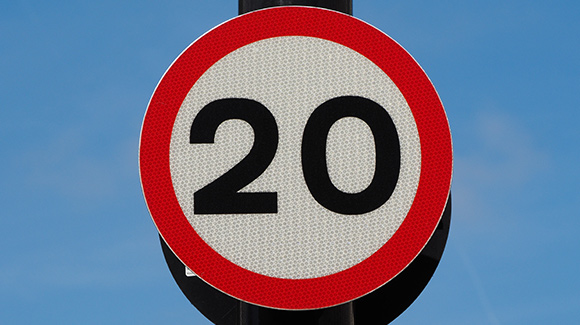
Motorway speed limits
The speed limit on motorways is 70 miles per hour. In some cases, the speed limit may be further reduced in response to road safety or environmental impacts, such as air pollution.
Variable speed limits
Variable speed limits can be set across various stretches of smart motorways, usually in response to a hazard or accident. They are controlled using technology that measures the flow of traffic.
The variable speed limit is indicated in a red circle on the digital sign in the gantry above the motorway lane.
You must not exceed the speed limit otherwise you could be hit with a fine and penalty points on your driving licence.
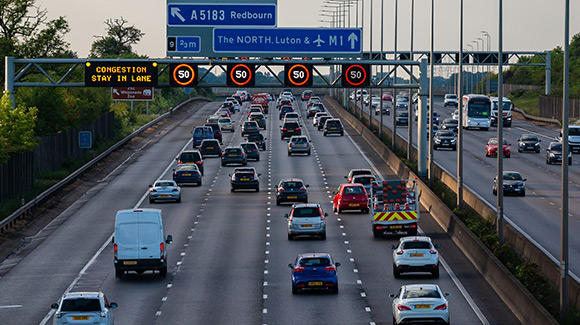
Local speed limits
Local councils can put in place more appropriate speed limits on local roads. These areas must be clearly signed.
20 miles per hour speed limits are often enforced in residential areas, typically near schools and in elderly communities. Traffic calming measures, such as speed bumps are often in place to encourage motorists to slow down and help make roads safer.
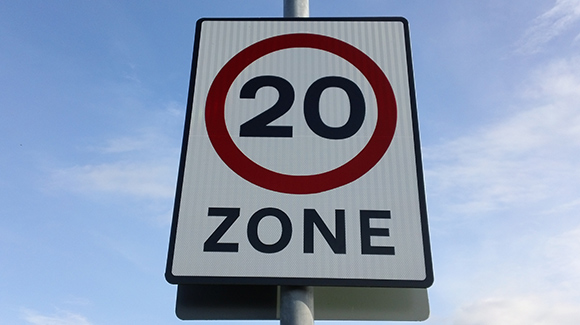
National speed limit UK
A white circular sign with a black diagonal stripe through it means that the national speed limit applies. The national speed limit varies depending on the type of road and the vehicle you’re using.
The national speed limit for cars, motorcycles, car-derived vans, and dual-purpose vehicles is:
- 60 miles per hour (50 miles per hour if towing) on a single carriageway.
- 70 miles per hour (60 miles per hour if towing) on a dual carriageway.
The national speed limit may be different for other categories of vehicles.
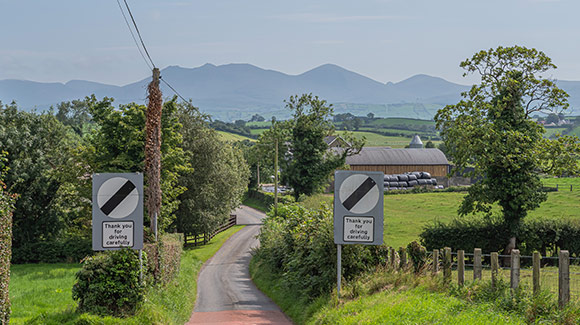
Speed limiters
A speed limiter is a safety device that allows you to set a top speed for your vehicle. It is a legal requirement for speed limiters to be fitted on vehicles with more than eight passenger seats, such as buses, minibuses, coaches, stretch limousines, as well as goods vehicles that are more than 3.5 tonnes.
How many miles per hour can you go over the speed limit?
The speed limit is the maximum speed you can drive at, even driving 1 mile per hour above the speed limit is breaking the law.
A common misconception is that there is a 10 per cent tolerance rule, that gives motorists some leeway if they are caught speeding. in theory, this means that a motorist could get away travelling at 33 miles per hour in a 30 miles per hour zone. This is not the case.
One of the main reasons for the tolerance is due to the inaccuracies of the equipment used to measure a motorist’s speed. However, the 10 per cent rule is for guidance and is not legally enforceable. So essentially, it’s up to the police’s discretion whether they charge you for a speeding offence.
Can police stop you for driving slowly?
Motorists can be stopped by the police for driving slowly and could receive a fine or penalty points on their driving licence.
Driving too slowly is an offence that comes under inconsiderate and careless driving. It can frustrate other motorists and force them to take unnecessary risks, such as tailgating and unsafe overtaking. It can also cause traffic tailbacks.
Can you speed if it is an emergency?
There are no exemptions if you’re caught speeding, even if it’s an emergency. The only exceptions are for the police, fire and, ambulance services in the event of an emergency response.
Final thoughts
Speed limits are used to set the maximum speed limit you can drive at on a given stretch of road. They are limits, not targets, and should never be exceeded. It is the driver’s responsibility to know the speed limit for the road they are travelling on.
Driving at a slower speed may be more appropriate depending on the road conditions. But you should always be mindful of other road users and not drive in a way that may frustrate or irritate them.
Learn more
Share this article
Table of Contents
More posts
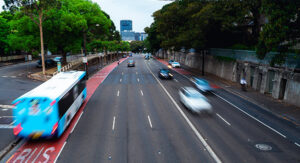
What Happens If You Drive In A Bus Lane By Mistake?

What Happens If You Speed With A Black Box?
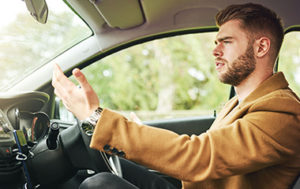
Too Close For Comfort! Tailgating, Here’s What You Need To Know
